How To Sell Courses Online In 2022 (And Earn $12000+ A Month)
If you want to sell courses online you’ve come to the right place.
In this complete guide we’re going to walk you through everything you need to know to start, launch, and grow your profitable online course.
Let’s get right into it…
The Most Profitable Way For You To Sell Courses Online
We’ve seen a major shift in how people sell courses online. One that has made courses more profitable, easier to run, and retain more students long term.
What is it?
Membership sites.
Why Membership Sites are Better than Single Courses
Traditional online courses focus on solving one pain point or problem in their target audience’s life. You know, things like:
- How to negotiate a pay raise.
- How to start a podcast.
- How to get started painting with watercolors.
This was a great way to make money if you ran a niche YouTube channel or blog where you taught specific skills, and it meant you could create a new digital product for each skill.
Like this one-off course from Ramit Sethi, a personal finance advisor and author, where he teaches people how to improve their confidence and mindset:
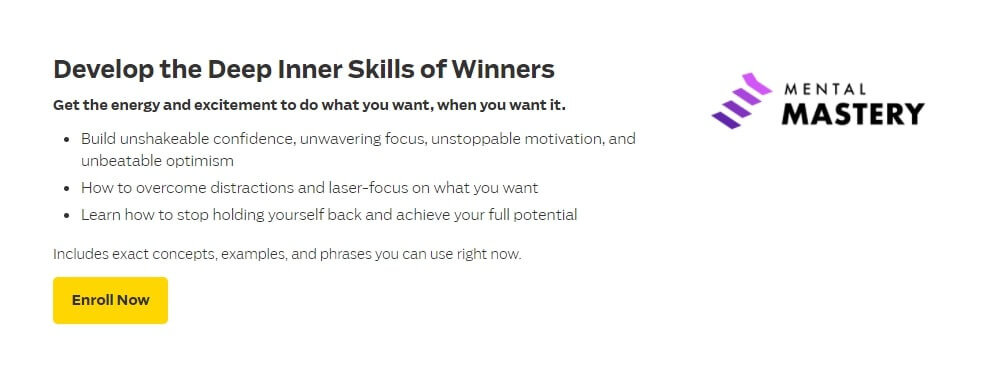
But, singular online courses have their limitations and students are looking for more!
Let me explain…
Because each course you create is laser-focused on one topic, it’s usually finished within 4 to 12 weeks, and that means there’s a built-in churn rate. Customers must eventually finish.
This means you always have to find new potential customers and your existing customers end up in a sort of “feast-and-famine” kind of learning where they leave and wait to join new courses.
But there is a way to keep your customers around for longer, help them learn more, and increase their overall satisfaction.
That’s where membership sites come into play.
Membership-focused course platforms still deliver self-paced educational content – that address key pain points. But they allow you to deliver more content to more people over a longer period.
Better still…
Students are actively looking for these types of platforms because they allow them to learn more and interact with like-minded people.
In this post, we’re going to show you how to sell courses online using this membership model, and create a more complete experience for your potential customers.
If you want to learn more about this shift in the industry, you can check out our video breakdown below:
But, in the next section, we’re going to get right into the actionable stuff.
Let’s go…
How To Sell Courses Online In 2022
1: Pick Your Online Course Niche
You’re going to start by taking a “zoomed out” look at your online business and define the niche you’re going to create tutorials for. As our founder, PJ, always says:
Your niche is the “umbrella” topic that each of the lessons you want to teach falls under. This will form the backbone of your profitable online course.
If you already have an established online presence – like, say, a YouTube channel – you’ll probably have a good idea of what your niche is. If so, you can jump to the next section.
But, if you’re still thinking about it, then let’s run through how to find your niche.
Put simply:
Your niche should be specific enough that it’s easy for someone to identify what you do, but broad enough that you can teach multiple topics.
For example, let’s say you want to teach people to learn an instrument:
- Too Broad: “I teach people to play music.”
- Too Specific: “I teach people how to play John Legend songs.”
- Just Right: “I teach people how to play smooth piano.”
That last one is exactly the approach that the guys at the (aptly named) Play Smooth Piano took for their online courses:
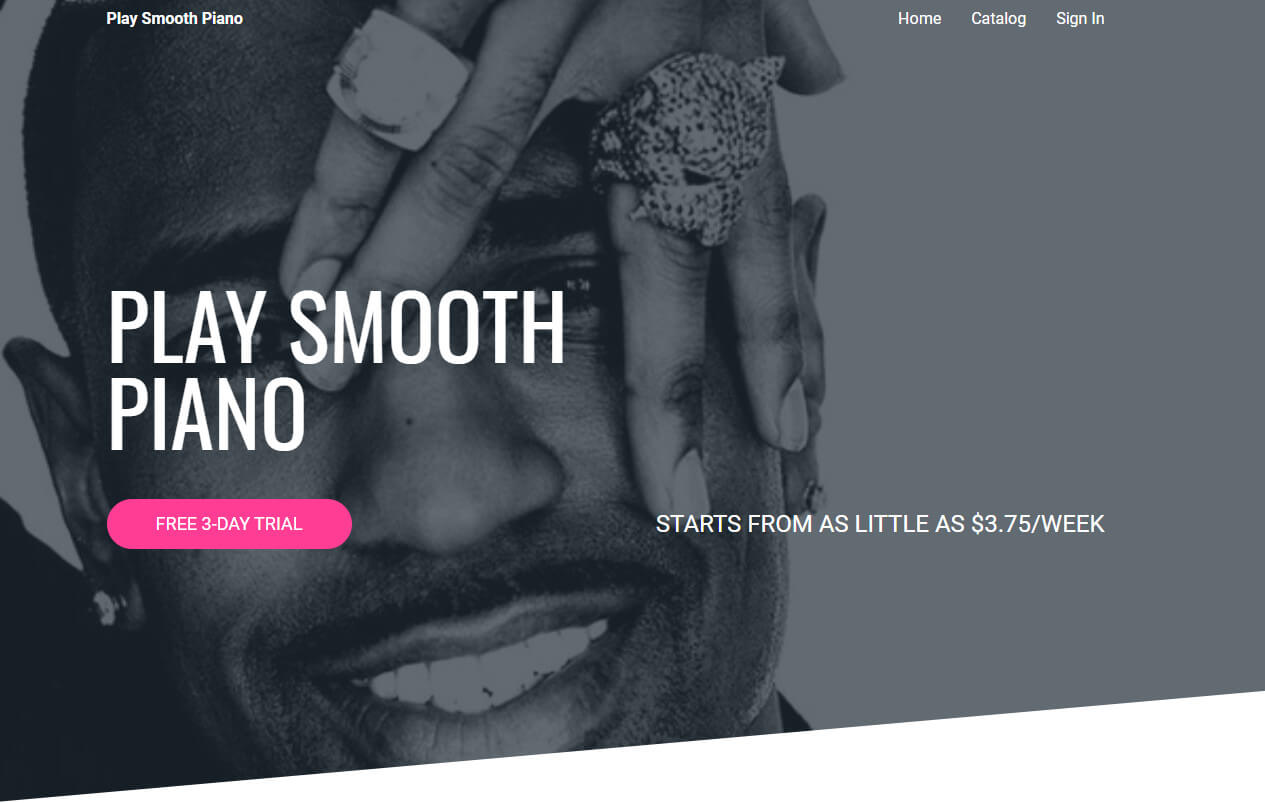
They’ve managed to find a clearly defined niche that attracts people looking to learn a skill (more on that next) but that’s broad enough to give them lots of flexibility.
They can create a wide range of tutorials, touching on lots of different artists and songs, that keep their content fresh, interesting, and relevant:

A great way to find your niche is through testing.
To see if your idea is a money-making one, try offering free videos through a YouTube channel and gauge the reception.
You can also do some heavy research on video sites like YouTube, Udemy, and even social media platforms like TikTok to see if there is demand for your content.
Chances are if someone else has been able to create and sell courses online in the niche, it’s a product people will be willing to pay for!

![]()
Is Your Video Content Niche Enough?
Read this Article
2: Plan Your Course Content
Once you’ve found your specific niche you need to clearly define who your audience is and what educational content they want to see in your new course(s).
You can begin to better understand your audience and their needs by asking yourself these 3 questions:
- What common demographics do your audience share? (Age groups, interests, lifestyles, etc.)
- What does this audience want to learn when watching your videos? (Think of all the key takeaways from your modules and courses.)
- What can you bring to your niche that your audience wants and nobody else is providing? (Think of this as your unique selling point.)
The answers you get will help you gain an initial understanding of who you should be aiming your content at, and allow you to generate some early topic ideas.
If you want to learn more about understanding your audience, you can read our guide on finding your product-market fit right here:
Suggested Read:
But if you feel confident that you understand your audience and their needs, you can start planning the videos you want to create.
Let’s look at an example to get your juices flowing.
Gue.tv has built an online education platform about helping people learn to become better divers:
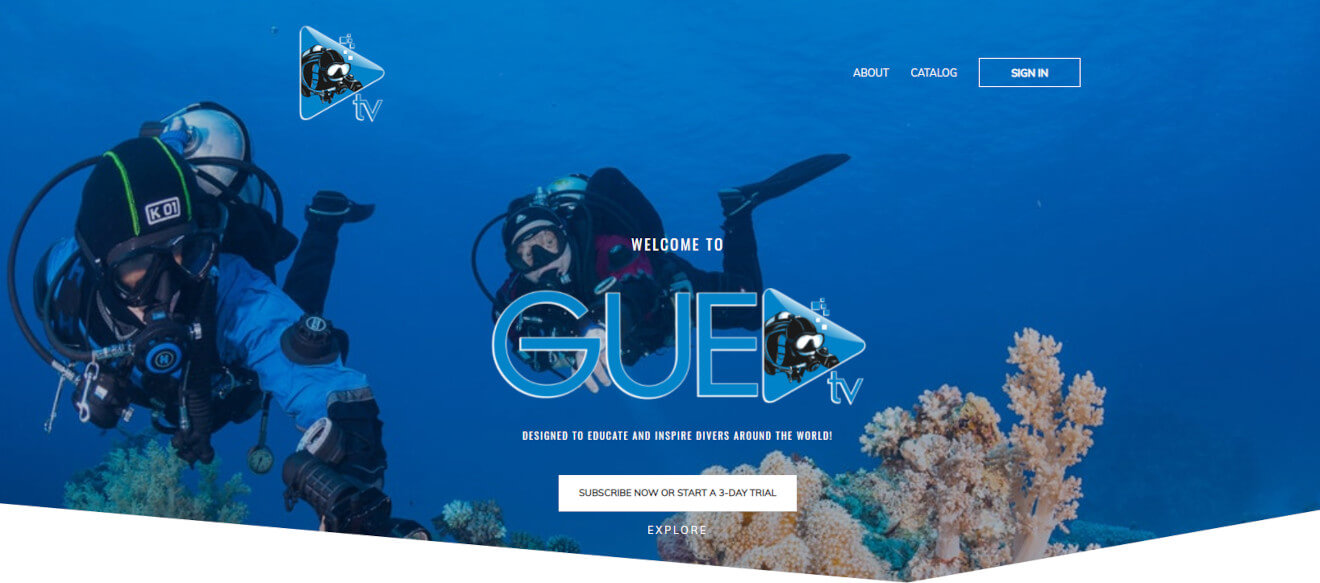
They organize their content by breaking it down into relevant course topics around common pain points or specific skills a diver might need:
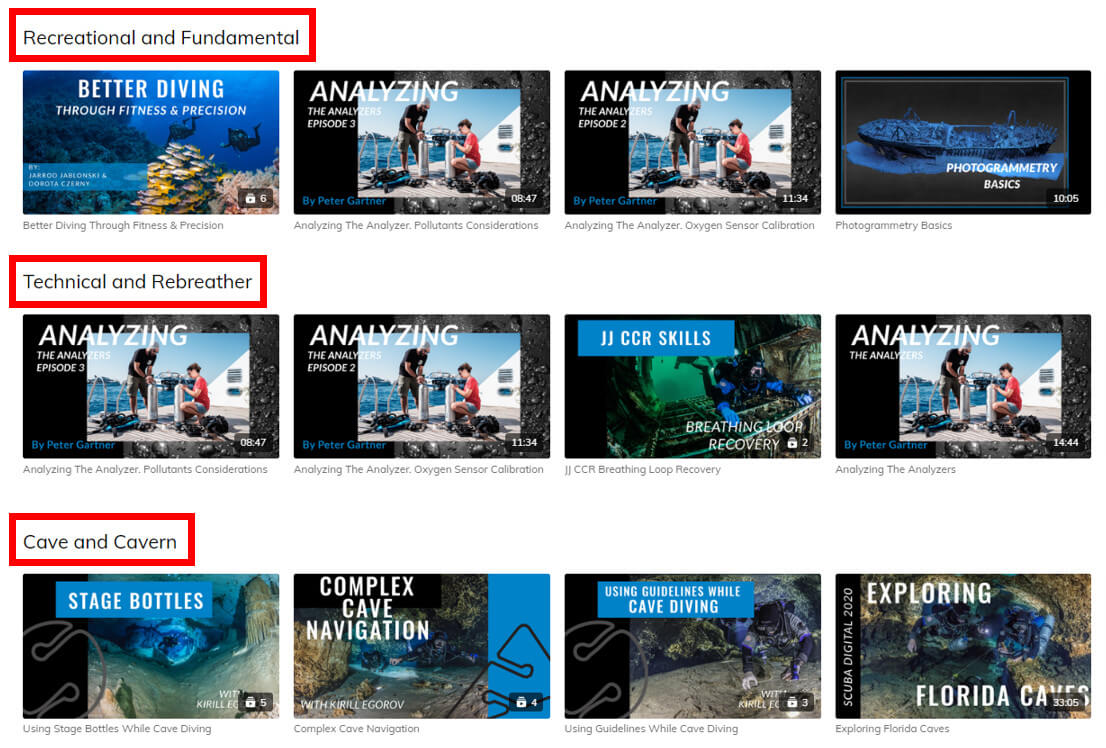
And then break that down into the different individual modules based on what the diver needs to know.
The course modules increase in difficulty as they progress, with each video or module providing a key building block that builds up to the next lesson.
The modules can either be presented as a single video or broken down into multiple videos – what we call a “collection” – depending on the needs of the module:
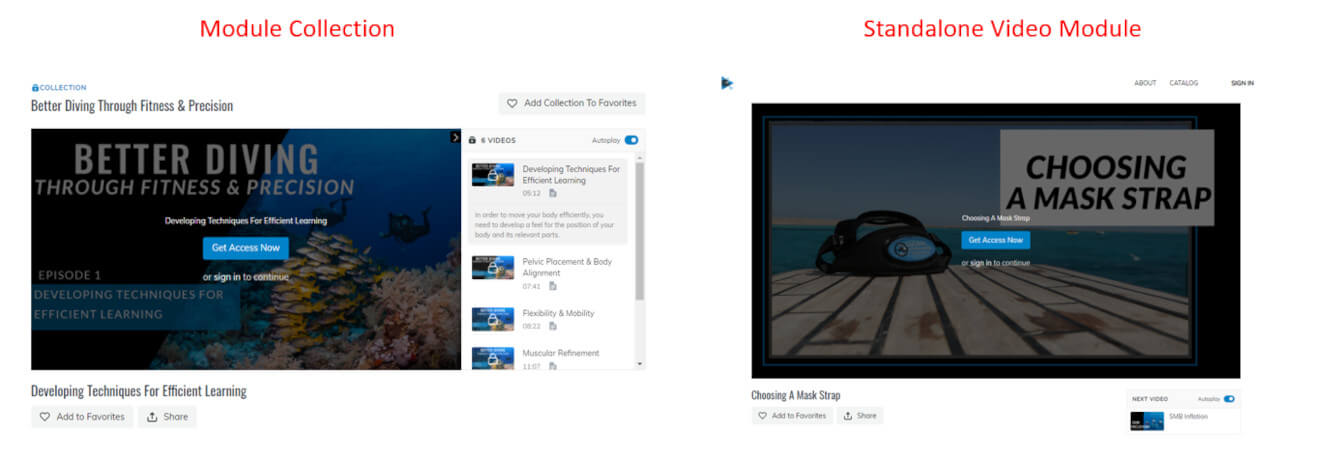
The specifics of how you should do this for your course are a little beyond the scope of this article. You’ll have to decide based on your audience and how you like to teach.
But, we can help you with how your videos might need to look!
Data shows that online learning students have shorter attention spans, so they typically favor step-by-step video courses that have short modules and clear takeaways.
Because of that, your tutorials or online lessons should be between 3 and 25 minutes long. Though, it’s safer to stick to the shorter end of that spectrum!
Okay, with your course planned out, it’s time to look at where you’re going to host it.
3: Choose An Online Course Hosting Platform
The next step is to choose where you’ll host and sell your courses.
You may have already read a few articles around the “best online course platform” and considered options like Thinkific, Kajabi and Teachable.
We also think you should check out Uscreen.
Though general course hosting platforms are great and have their place, you need a specialized platform – one that specializes in video hosting and video selling!
After all, videos are exactly what your course is made up of right?
You need a place that allows you to upload, share, and monetize your videos. And, we highly recommend you choose a provider that specializes in video websites and apps.
Uscreen is a great example of this:
We have everything you need to start, launch, and grow your online education business. With us, you can:
- Create your own course storefront.
- Upload and organize your videos with ease.
- Distribute your content with OTT apps on TV and mobile devices.
- Make your content downloadable to watch offline.
- Monetize your content, your way.
- Accept worldwide payments.
- Use live streaming to reach audiences on any device.
- Track subscriber growth and churn.
- Grow your sales with affiliate programs and referrals.
- Own your audience.
Better still…
We’re currently the number one platform in the video monetization industry and our customers earn an average of $12000+ a month!
But…
We also know Uscreen isn’t the right choice for every video business, so you should take the time to shop around and find the VOD platform that’s right for you.
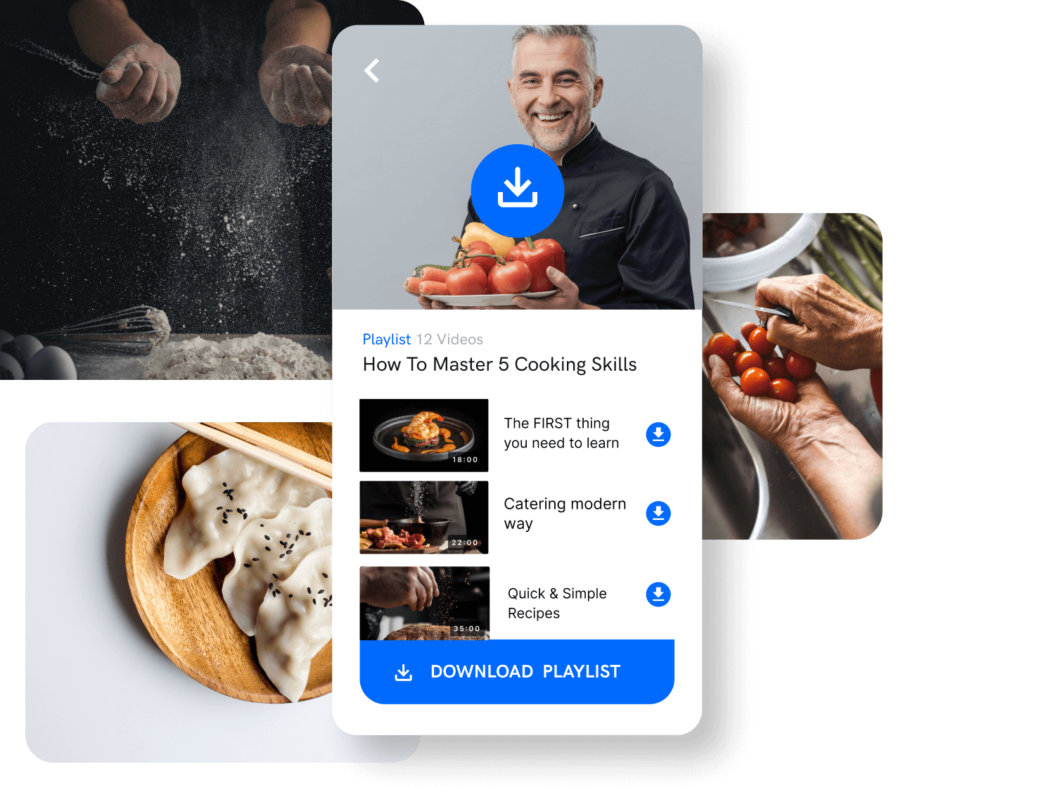
![]()
Start your 14-day free trial today!
Start Free Trial
4: Pick Your Pricing Strategy
With your platform in place, it’s time to start thinking about how you want to monetize and sell your course. This is the most important step toward learning how to sell courses online!
There’s more to pricing than payment gateways and PayPal plugins. This is where you choose the monetization strategy and business model you’re going to use!
There are 2 monetization strategies to choose from:
- Subscription monetization: where users pay a recurring fee for access (perfect for the membership model you saw earlier).
- Transactional monetization: where users pay a one-off fee to access your course content (more like the traditional model).
- Hybrid monetization: where you use elements of both business models to boost your earning potential.
Let’s take a closer look at each of them.
Subscription Monetization
The subscription monetization model gives your subscribers full access to your library of course content for a recurring monthly or annual fee. (A little like a Netflix or Spotify subscription.)
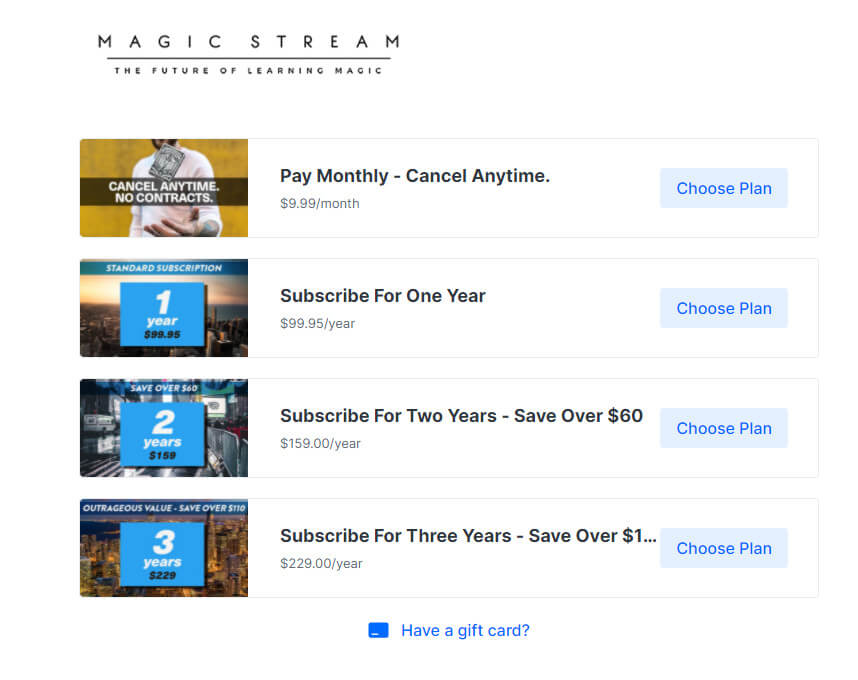
This business model has become incredibly popular because of its convenient nature for both course creators and students. It’s also perfect for membership-style platforms.
The reason for this is simple:
Subscription monetization helps you to create a predictable and consistent income.
Where one-off course creators have to focus on finding a consistent stream of new leads to sell on their products, subscriptions allow you to keep existing customers for longer.
That’s because subscription models allow you to offer:
- More affordable upfront pricing.
- A nurturing community.
- A valuable service.
As long as you give your students a reason to keep coming back for more, they’ll stay subscribed to your service.
Subscription monetization is a great choice if you plan to teach lots of different courses of different lengths that all relate to each other. (Like the Gue.tv example you saw earlier.)
This allows you to keep everything under one roof and focus more on nurturing your community and designing and creating valuable course content, rather than grinding for that next sale!
If you want to learn more about subscription business models, and why they’re so effective, check our out complete guide to them below:

![]()
The Full Guide To Subscription Business Models (2022 Edition)
Read this Article
Transactional Monetization
Transactional monetization is where people pay a one-off fee to access your course content. This will typically be for access to a standalone course addressing one pain point.
A good example of this would be buying a course from Udemy:
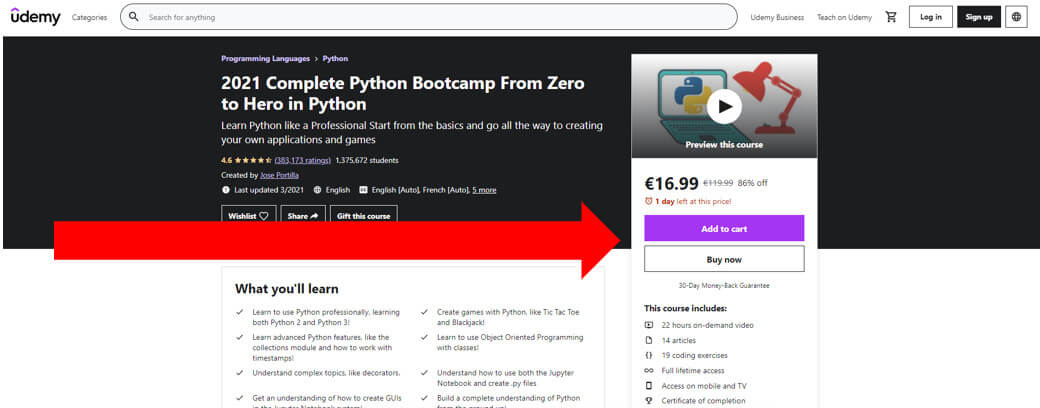
Transactional monetization is a more traditional approach and can result in higher initial earnings because you can charge a higher up-front fee for access.
It can be a really good option if you only plan on creating and selling one course, or selling multiple courses that are much different in the topics they teach.
But…
You do have to make sure the quantity of purchases stays high enough to earn a steady profit – and that can be hard work.
If you do choose transactional monetization as the model for your online course, we highly recommend you do it on a platform where you can set your own prices.
Course marketplaces will often charge higher transaction fees and run a lot of discount promotions that can impact your overall earnings. So, a platform you own is a safer option.
If you feel a little torn between these 2 models, there is a 3rd option you can look at…
Hybrid Monetization
Hybrid monetization is where you combine the subscription and transactional models to increase the amount of money you can make on your platform.
Let’s walk through this by looking at FaderPro, a company that creates and sells tutorials around music production and DJ skills.
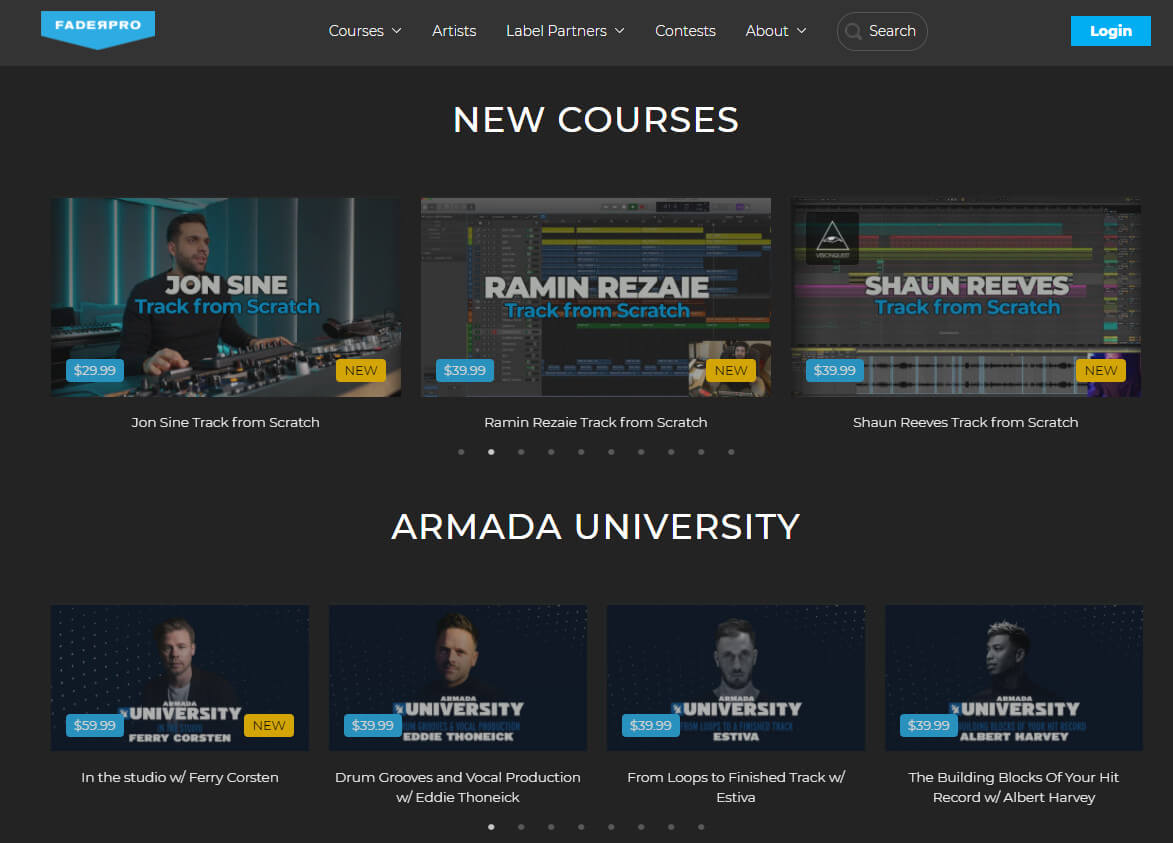
They offer 2 pricing options to their students.
The 1st is a transactional option, where people who know that they want access to a specific course can pay a flat fee to access it:

The 2nd option is a subscription option, where students can sign up to their Fader Pro Producers Club and pay a recurring fee to access all of their course content:
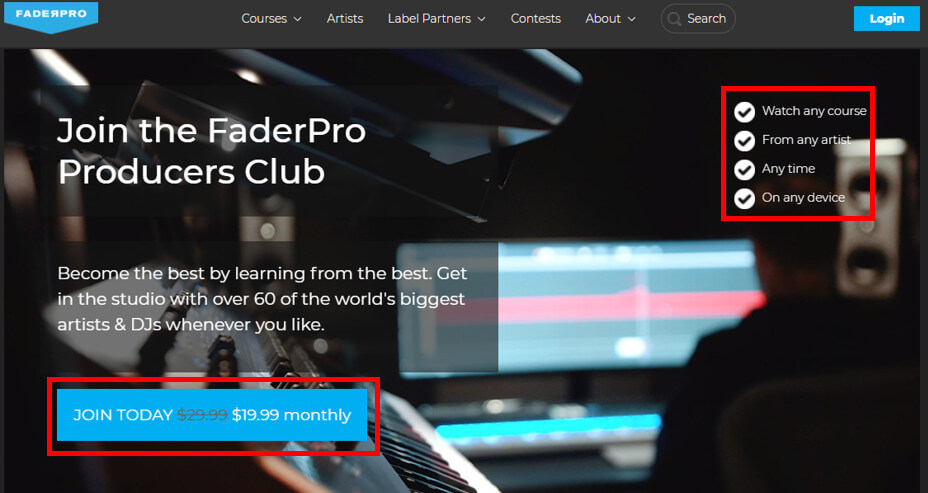
This allows them to generate income from different audiences who have different uses for their tutorials. There’s an option for everyone so they get the best of both worlds.
Now…
It’s worth mentioning that this works best for course creators with a large content library. You’ll need 3-4+ standalone courses if you want to use Fader Pro’s model in your online business.
But there is another way you can use this hybrid model.
You can charge a flat subscription fee to access your course library, and then ask for a one-off payment to access additional premium tutorials, like…
- live workshops
- Q&A sessions
- webinars
- interview sessions
..that go above and beyond the content included in your subscription model. That means you can periodically boost your income with cash-flow injections from bonus content.
And the best news?
You can sell your courses online using all of these pricing strategies through Uscreen!

![]()
Start your 14-day free trial today!
Start Free Trial
5: Create Your Course Content
Now it’s time to create the course content you planned in step 3.
If you have the skills to produce and edit your own video, you can ideally create your own video material. Here’s a great guide from our resident video content creator, Daniel, about great ways to improve your content for free:
Alternatively, if you have the budget, you can hire a video production team to help you take care of it if that’ll make you feel more comfortable.
We’re limited in what we can tell you about how to create your video content – everyone’s creative process is different – but what we can tell you is: think about your viewer.
It’s important to consider elements like:
- Where will the viewer be watching this tutorial?
- What equipment will they need?
- Which supporting materials can you provide to improve their results or experience?
For example:
Cakeflix create tutorials around how to make (absolutely stunning) looking cakes, like this wedding cake right here:
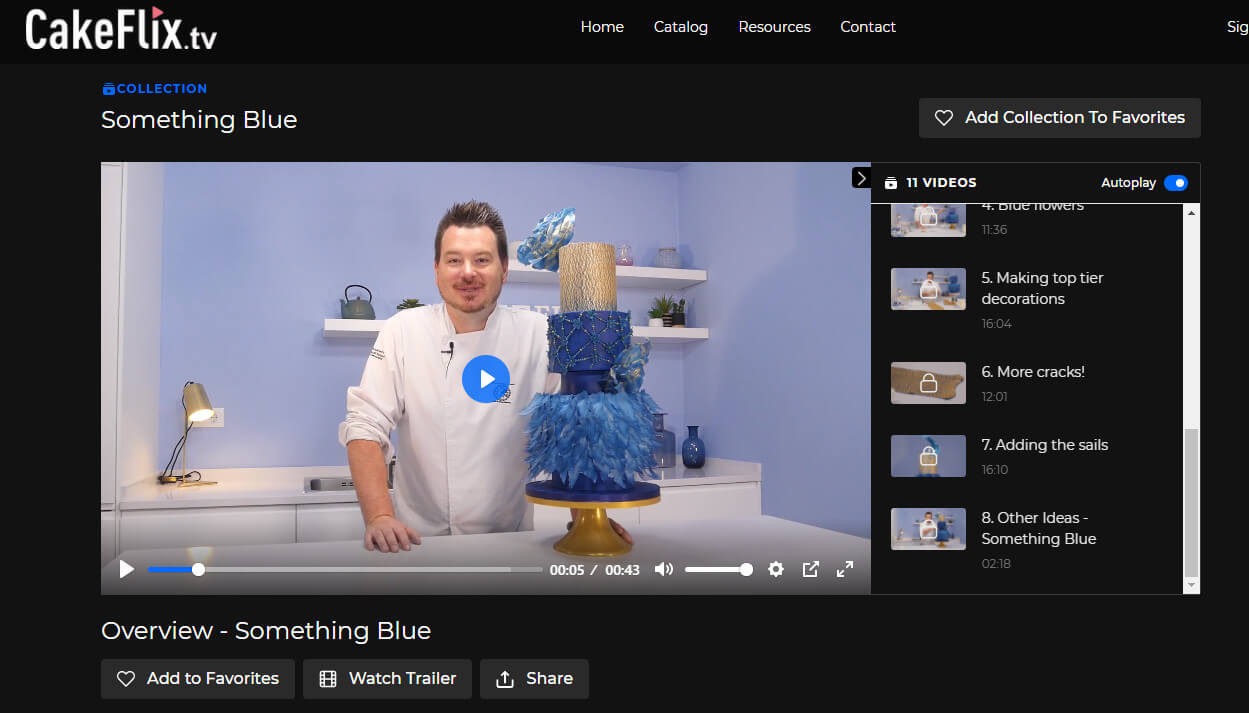
When putting this tutorial together, Cakeflix’s course creators would have had to take the following things into account:
- Location: this is probably being watched on a portable screen, like a tablet or smartphone in a kitchen or similar environment
- Resources: they’ll need access to specific tools and ingredients to get the same results
- Timelines: baking is often done in stages, so their videos should reflect a similar process
You can see straight away that the video has been recorded in an environment similar to the learners’ (a kitchen). And, they’ve broken the lesson down into segments:
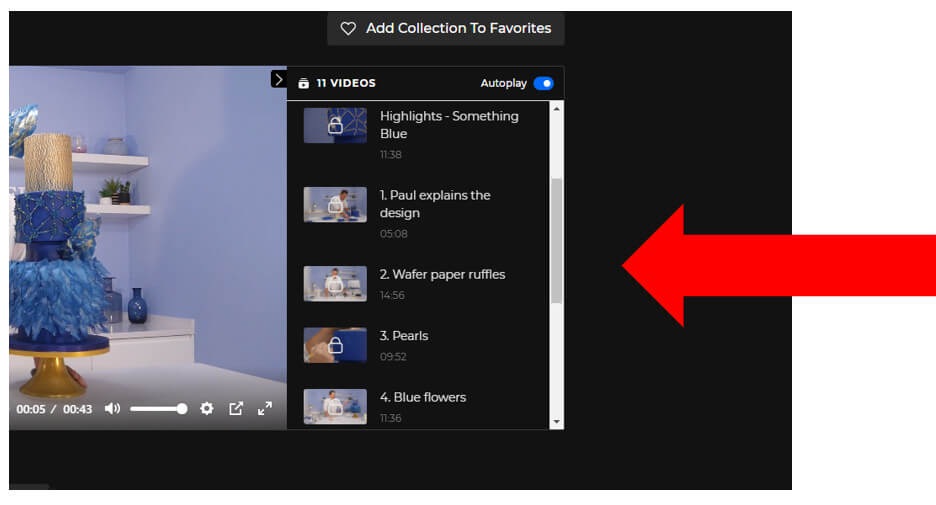
And, under the “resources” section of the video, they’ve included a downloadable PDF that contains a list of everything they’ll need to complete the tutorial:
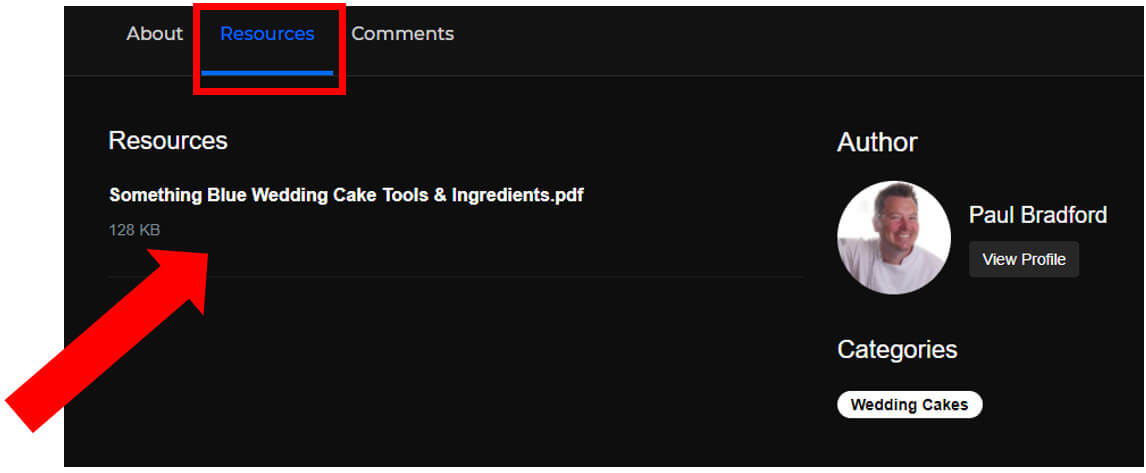
There’s a lot of flexibility in what you can include, and it can be unique to how you like to educate people. We’ve seen a lot of course creators have success by including:
- PDFs.
- Podcast episodes (have you listened to our Video Entrepreneur Podcast by the way?)
- Audio files.
- Infographics.
- Ebooks.
- Slides.
You really do have the freedom to pick and choose what will work for you, and you can even ask students what they’d like to see. The more value you add, the better the results!
If you’re using the subscription monetization model, we recommend you record at least one complete course module before uploading your content to your site.
6: Upload Your Video Tutorials
Once you have created enough videos to start selling your tutorials, you’ll need to upload them to the course hosting platform of your choice.
If you’re using Uscreen…
We’ve designed the uploading process to be as quick and easy as possible. All you have to do is drag and drop the videos into the “Content” area of your Uscreen dashboard:
You can upload your tutorial videos quickly and securely from any browser, or you can sync with your Dropbox account to upload directly from there. (Here’s how!)
We format all of your videos to be optimized for both desktop and mobile device viewing. After all, 54% of website traffic comes from smartphones, and we want you to be prepared!
(This is also why we recommend you look at native OTT apps for your online business. More on those later.)
However…
We do recommend compressing your videos and optimizing your file sizes. You can find the most current uploading guidelines in our Uscreen Help Center guide here.
7: Organize Your Course Content
With your video tutorials online it’s time to organize them.
The organization of your tutorials is an important part of course creation because it can help create a good user experience and showcase your content to potential students.
A well organized content library lets you…
- help students easily find the videos they want
- show potential customers what tutorials are on your site
- reduce “friction” so it’s easier for students to get started
…all of which can only have a positive impact on the customers you convert and how many you retain.
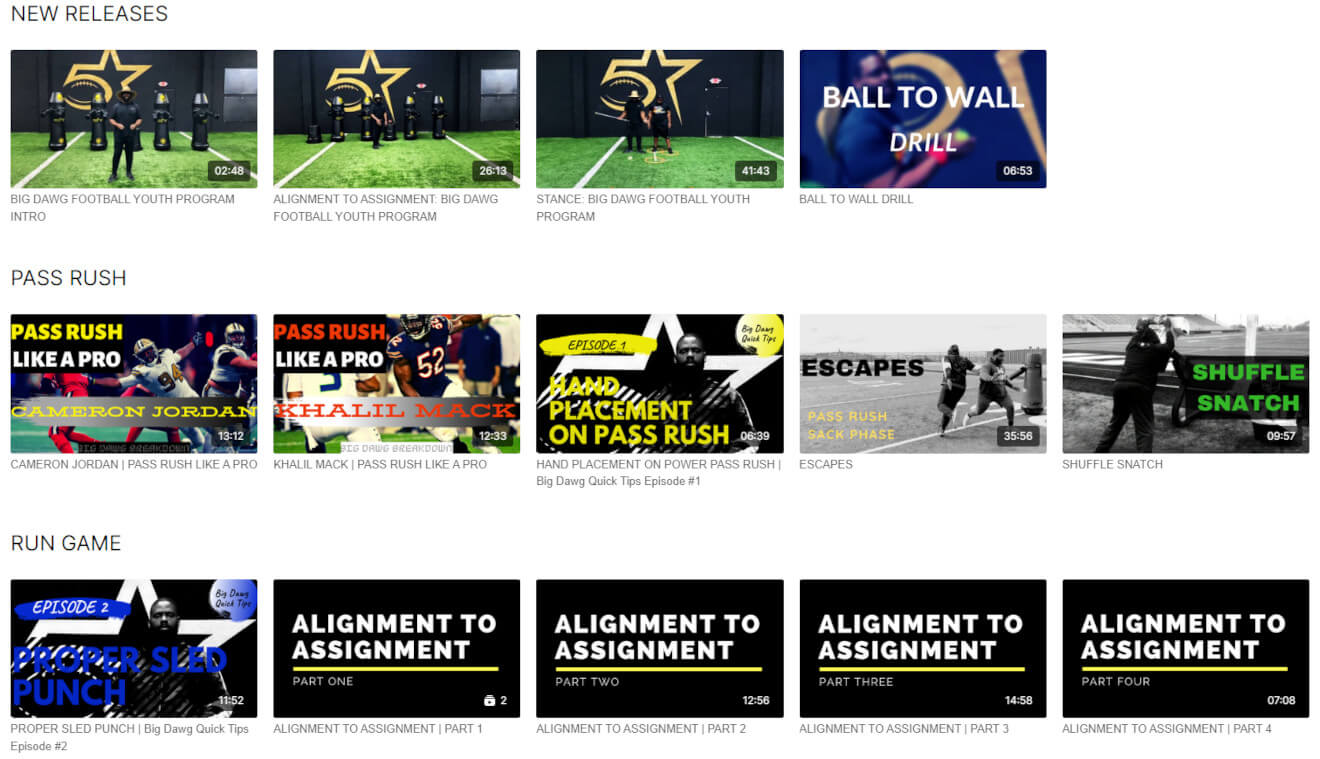
It’s also important to organize your content library before you customize your website, because having your video tutorials in place creates a “frame” to build your site around.
As a Uscreen customer you can organize your course content around 4 components:
- Catalog: your full library of video tutorials, displayed by categories.
- Categories: the individual topics you’ll cover.
- Collections: groups of videos that address a specific pain point or skill.
- Videos: the individual videos that make up your course.
How you choose to organize these will be down to the course you’re creating and your audience’s needs. You’ve already seen a few examples of how this can be done.
But, let’s say you’re going to be teaching courses around arts and crafts.
The goal of organizing your content is to make it easy for your students to find the content they need to improve their skills. So, you might want to create categories around…
- topic covered
- difficulty level
- materials needed
- length of lesson
…so they can narrow their search and start learning. You can also add custom filters so that people can search for specific lessons or topics and find content even more easily.

There may be an element of trial and error to this, but when you’re starting out, focus on logical progressions and grouping content together where it makes sense.
To learn more about the finer points of how to effectively organize your video tutorials, check out our guide below:

![]()
How to Strategically Organize Your Video Content Library for Success
Read this Article
8: Customize Your Course Website
Okay, now for the really fun part…
It’s time to customize your course storefront.
The platform you’ve chosen should give you the option to customize your own website and add your branding. Let’s make your new online business shine!
If you’re using Uscreen, we have a number of customization options you can choose from.
Our most popular tool is our plug-and-play page builder that lets you build stunning homepages and marketing pages.
You can choose from any of our “core” themes…
…and then edit the specific elements – like adding images, headlines, and text – to create a page that lets your brand and digital product shine through:
Or, if you’d prefer more of a pre-made solution, you can pick from any of our 19 customizable templates that will have your site up and running quickly and easily.
Now…
How you choose to customize your new online business is up to you. But one of the key things to remember is brand consistency across your online presence.
You need to consider the…
- logos
- colors
- images
- fonts
…that you’re using on other platforms – like social media or YouTube – and make sure everything matches up nicely. This will help your customers know they’re in the right place!
For example:
CarpFix sell online courses that teach people about carp fishing. They’ve used our page builder to create the home page of their video website:
You can see that they keep a consistency between the marketing platforms and video website, by using the same styles of photography, tone of voice, and logo images:
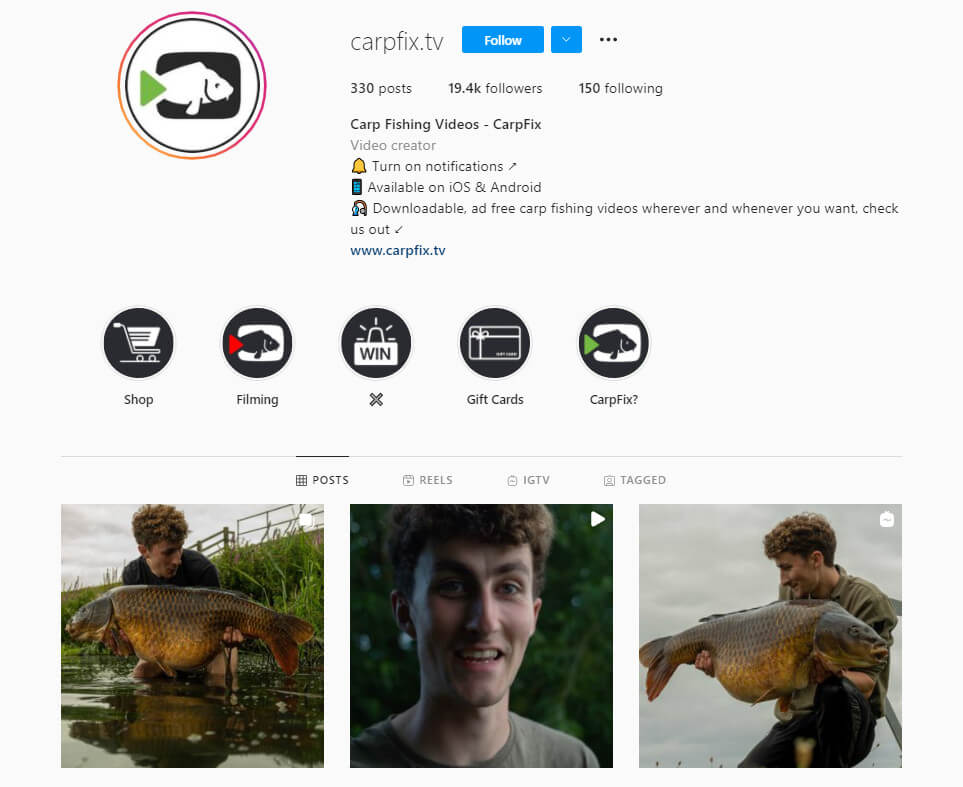
This subliminally assures the website visitor that they’re in the right place, and they’re visiting the website of a brand they’ve already interacted with and trust.
You can learn more about how to build your very own video website with Uscreen in our help center guides right here.
Chances are that you have an audience somewhere that you’re trying to sell your course to. That could be somewhere like:
- YouTube.
- Social media.
- Podcast platforms.
- Blogging on a personal or branded blog.
This audience will already be engaged with your work, and many of them will be ready to immediately buy the course or membership platform you release.
But some of them will need more convincing. That’s where marketing tools come in.
Marketing tools allow you to create systems where you can capture leads, showcase your new platform, and convert them into paying customers.
At Uscreen we give you an entire suite of marketing tools that help you grow your audience and boost your sales. We’ll look at those in-depth in the rest of this section.
And, if you’re on a different platform, you can still use all of this information by looking for 3rd-party integrations that do similar jobs.
Let’s get into it…
Landing Pages
The 1st tool you need to set up (or invest in) is a landing page builder. This will allow you to create standalone pages you can send potential customers to and convert them.
Landing pages are basically website pages that potential students “land” on – from links on your social media accounts, say – to learn more about a product or service.
They are really versatile and can be used for a lot of different marketing options to boost your course sales, like…
- course information pages
- sales pages
- free trial / free course sign up pages
- email list conversion pages
…that help you educate people on your platform or “capture” them on your other marketing platforms. (Email is important for this, and we’ll get into it in the next section.)
You can see how IAMAG Masterclasses, who provide industry-focused tutorials for movie and game artists, use a landing page here to promote their free trial:
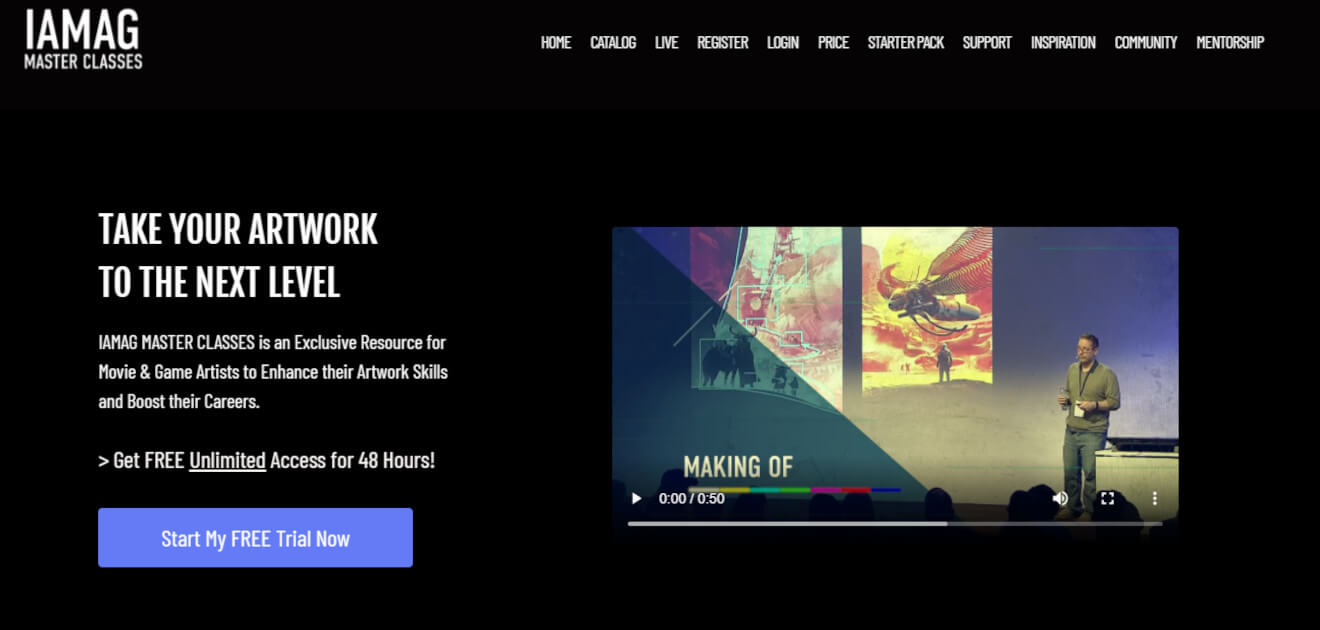
For any marketing campaign you create you should have a landing page at the center of it. This will give you the best chance to get new customers and grow your business.
And for best results…
You should try to include elements of social proof, like testimonials, and important sales information, like course topics and the payment gateways customers can use.
We could create an entire course on how to create high-converting landing pages and use them in your sales funnel – there’s a little more to it than we can fit in this section.
But we do have a great video breakdown on how to create excellent landing pages from scratch right here, that covers most of what you need to know:
And, if you’re using Uscreen, building landing pages is super easy. You have access to a premium landing page builder in your Uscreen dashboard:
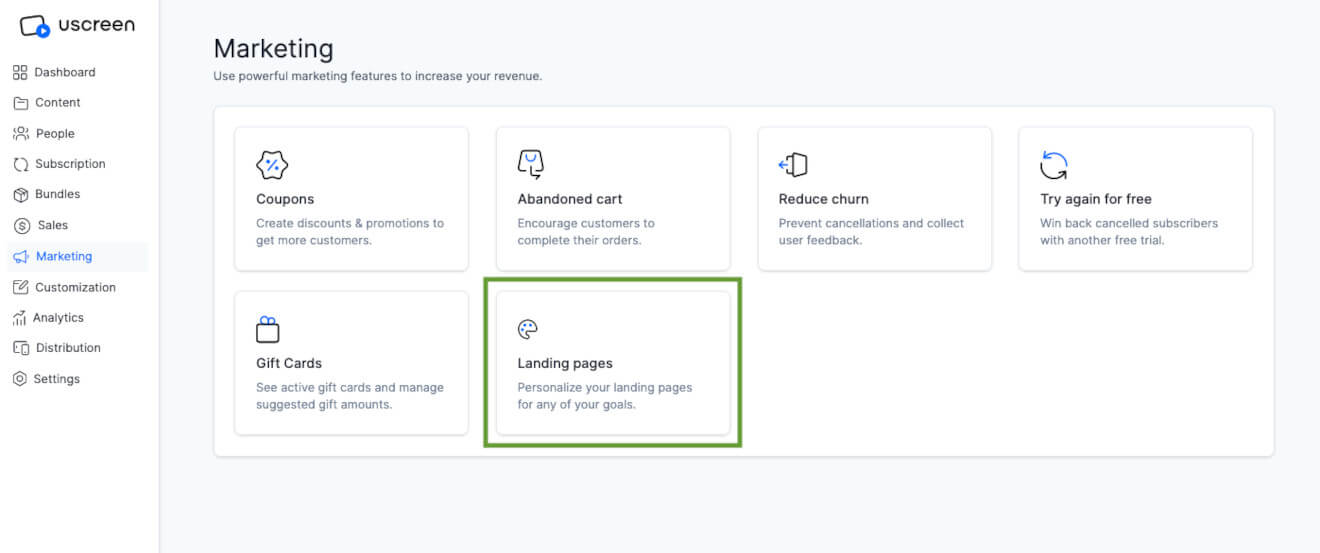
You can learn more about how to get started with our landing page builder right here – and below is a guide to the 5 landing pages your website needs:
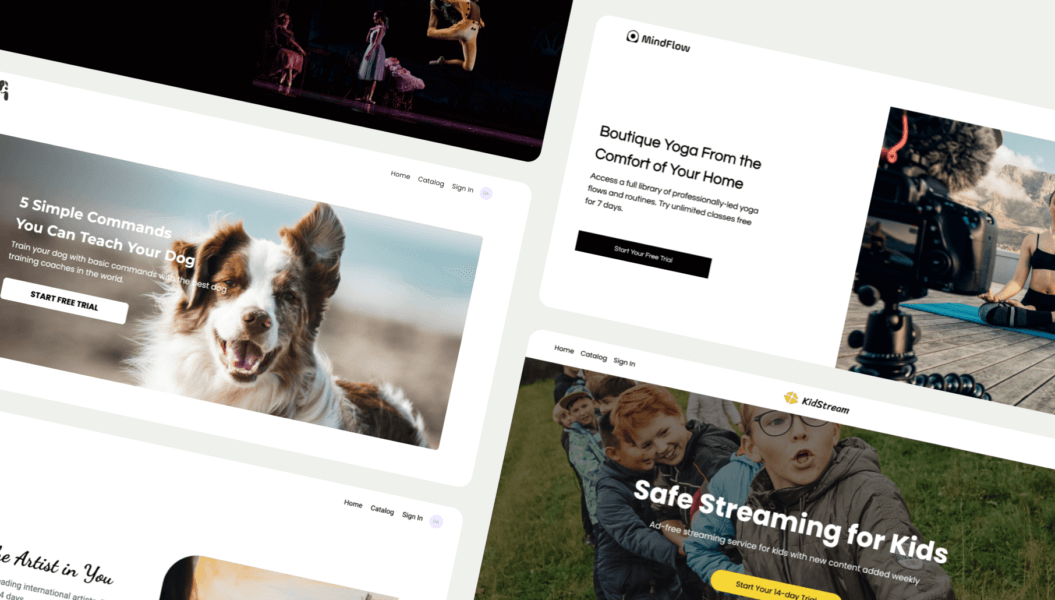
![]()
5 Essential Landing Pages For Your Video Streaming Website
Read this Article
Free Trial
Free trials are a great way to get people who are “on the fence” to try out your course content. Once they see how great what you’re offering is, sticking around will be an easy decision.
In fact:
52% of people who sign up for a free trial on a video-based platforms convert into monthly subscribers when the trial period is over.
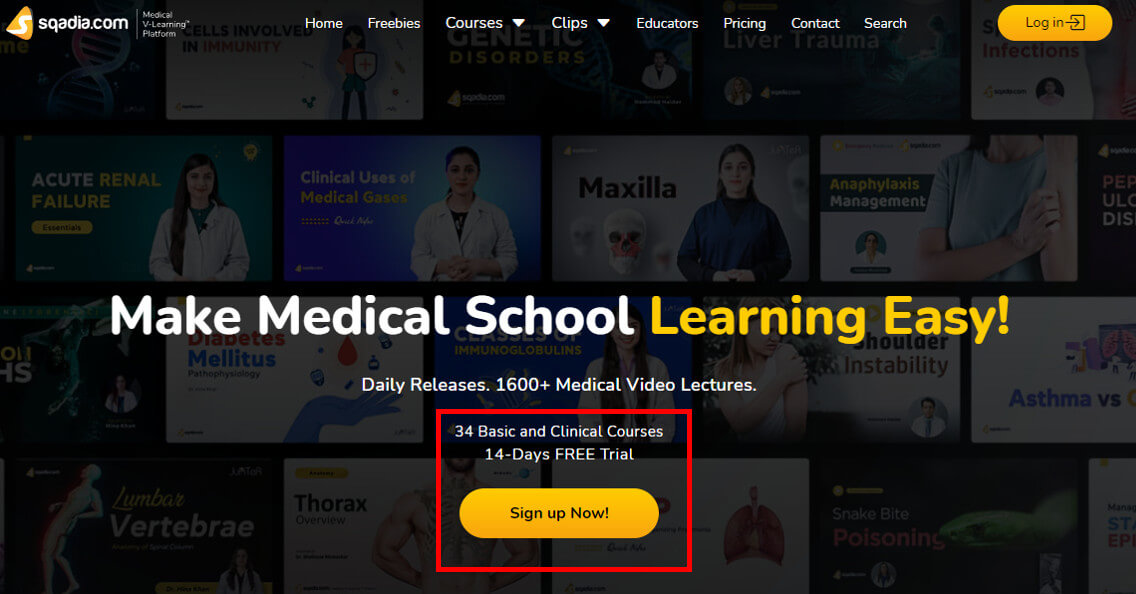
This is because free trials give potential customers a risk-free way to address some of their sales objections, like:
- Is it too expensive?
- Is it the right online course for me?
- How is this different from the last online course I tried?
- Will the course actually work for me?
- Will I even use it?
- Is it too technical for me?
Basically, you give the customer the opportunity to convince themselves to subscribe to your service. That’s a powerful strategy to increase your course sales and conversion rates.
Your free trial can be as long or short as you like it to be, but we recommend giving your customer at least 5-7 days to try out your platform.
If you’re a Uscreen customer, you’ll find this under the Subscriptions tab in your dashboard (more info in our help guide here):
You can learn more about how free content – like offering free courses – can help you increase conversions in our guide below:

![]()
How to Offer Free Video Content to Get More Paying Monthly Subscribers
Read this Article
Email Marketing Platform
Another important part of your marketing strategy is to have an email list. Why?
Because email marketing is 40x more effective than social media. It works as a direct-line to your students – both potential and existing – where you can talk about your courses.
It’s also a marketing option that’s virtually immune to changing market trends, global crises, and being forgotten about. (How often have you checked your email today already?)
Email combines 5 key elements that make it perfect for marketing:
- Longevity: email will be around for a long time.
- Trust: you have your audience’s permission.
- Ownership: your email list belongs to you.
- Accessibility: emails are a direct line to your customers.
- ROI: email provides a high return on investment.
The up-front costs for growing audiences using email are low. Some platforms like Mailchimp even let you get started for free!
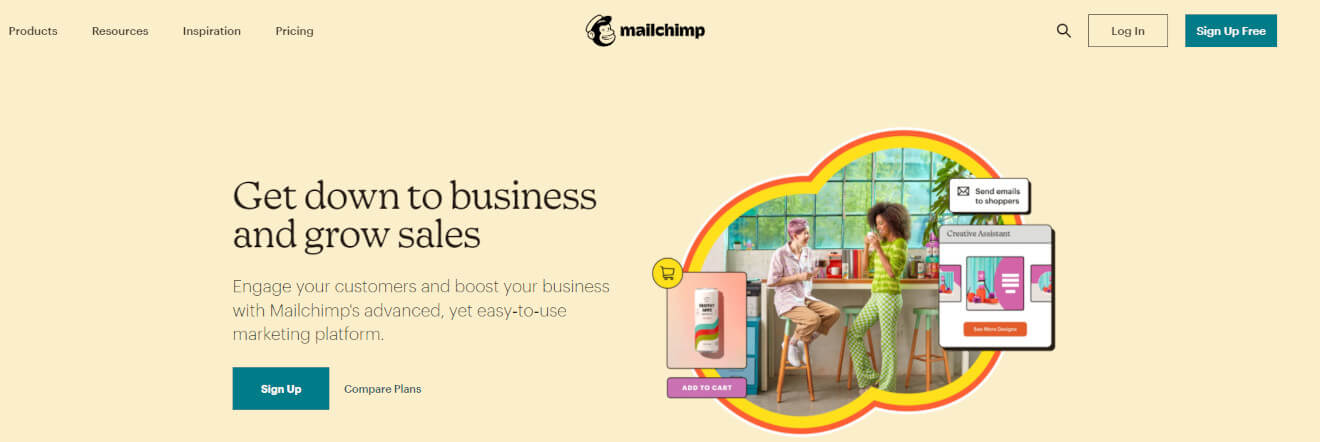
Uscreen provides you with some great email automations and integrations to get the most out of your email list (you’ll see some of those next.) But, you will need a 3rd party email marketing platform like Mailchimp to get started.
Subscription Upsell
If you’ve chosen to run a membership-style business – subscription upsells are a game-changer.
This marketing tool can help you 6x your revenue. In fact, over a 4 month period, Uscreen customers who used this tool generated $597,022.46 in additional revenue.
But what are they?
Subscription upsells involve giving your potential students the opportunity to upgrade from a monthly to an annual subscription before they complete their purchase.
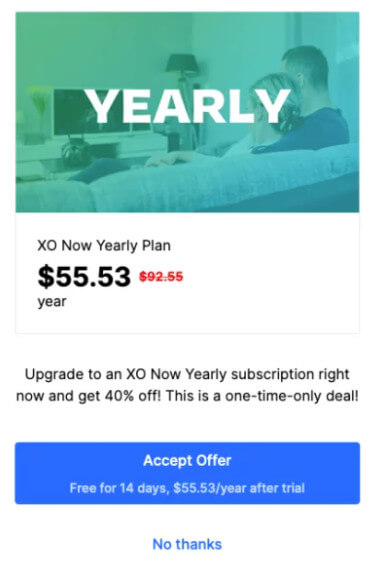
It might seem counterintuitive to offer a discount at this stage. But, this is proven to increase student retention and your online business’s overall annual revenue.
You can learn more about the ins and outs of why this works in our guide right here:

![]()
Upsells: How To 6x Your Video Streaming Revenue With No Work At All
Read this Article
But all you need to know for now is that this is a must-have tool you need to set up before you launch. If you’re a Uscreen customer, you’ll find it in your marketing dashboard:
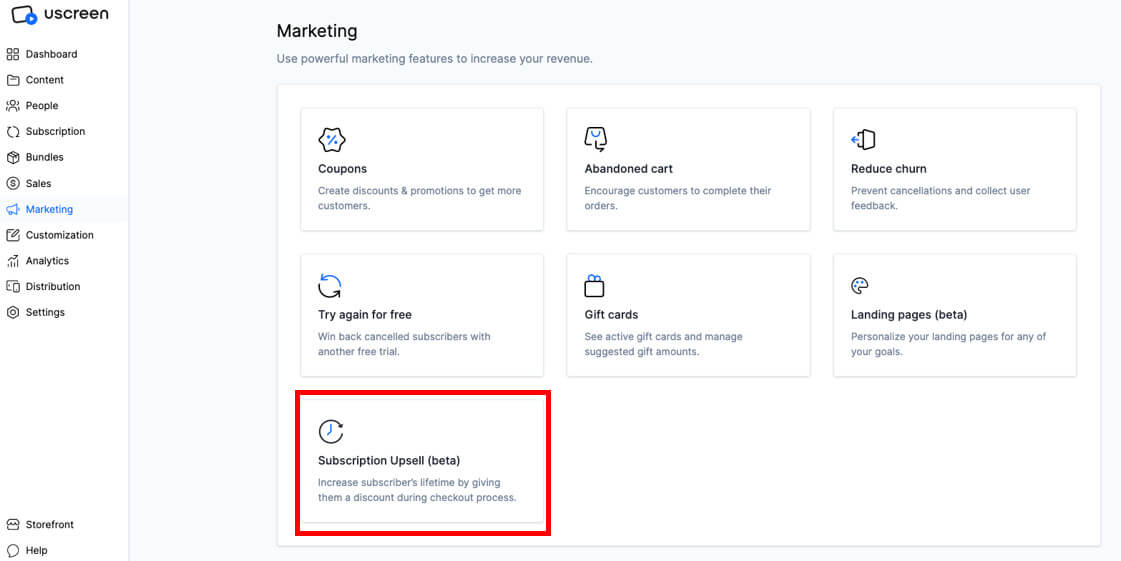
If you need help setting up the tool please you can find more information in our official help guide.
Abandoned Cart Emails
The final tool you’re going to set up is the abandoned cart tool. This is a great way to capture course sales and income that otherwise might have been gone for good!
An abandoned cart is when a customer has visited your website and begun the process of buying your product or service but has stopped before completing the transaction.
An estimated 7 out 10 customers on websites do this. And, it’s an easy fix to convert some of those potentially lost sales into new customers. How?
By setting up abandoned cart emails.
This is a series of 3 emails that’s triggered when a customer leaves your website with a course or subscription still in their cart. The 3 emails will prompt them to complete their purchase.
Better still…
You only have to write the emails once and they’ll be sent automatically every time someone abandons their cart. It’s a small amount of work for a potentially huge gain!
You can learn more about the exact emails to send and how to write them in our guide to this below:

![]()
How To Use Abandoned Cart Emails To Increase Conversions
Read this Article
Uscreen customers will find the abandoned cart feature in their marketing dashboard, and there’s a full guide on how to set them up in our official guide here.
10: Promote Your Course
By now your online course and website should really be starting to take shape! You’ve got your video tutorials, website, and marketing tools all in place.
It looks like you’re ready to start selling.
In this section, we’re going to walk you through 3 different ways you can start to drive traffic to your new website and get your first course sales.
Social media is a great place to start spreading the word about your course. If you already have a presence there, it could be as simple as creating a few updates announcing your launch.
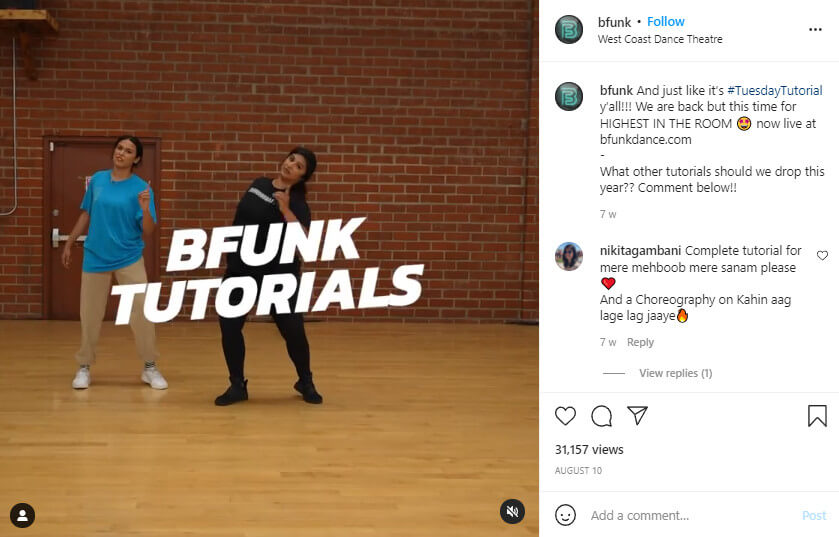
We’ve roped in our resident social media marketer, Madison, to give you a tried-and-tested strategy to generate buzz around the launch of your course.
She recommends that you set a firm launch date in the future – say 5 to 7 days from now – when your course will go live to customers. Then, create these 5 updates:
- Day 5: let people know your launch is coming up.
- Day 4: prompt people to ask you anything about your product and what to expect from it, (for example you can use the Question Box on Instagram, or create threads in Facebook Groups).
- Day 3: a giveaway of your choice for one ‘winner.’ This could be a free consultation, ebook, subscription discount, or whatever you’re capable of giving in return for someone sharing your post and tagging some friends. The goal here is to get as many people sharing your post in the hopes of being chosen as the winner.
- Day 2: a walk-through of your site on social media stories like Instagram or LinkedIn.
- Day 1: reminder of the launch.
- Launch Day: let them know that you have launched and share a trailer or teaser of your video content.
This should generate some early buzz with potential students and convert some of the die-hard fans in your audience to sign up.
If you want a more in-depth look at how to create a long-term social media strategy, check out our guide below where Madison talks you through exactly what to do:

![]()
The Social Media Guide for Driving Traffic To Your Video Streaming Site
Read this Article
Look For Content Marketing Opportunities
Content marketing is the process of creating high-value content that promotes your products or services. Chances are, you’ve already been doing elements of this to grow your brand so far.
For example, you might be…
- blogging
- creating YouTube videos
- sharing podcast episodes
…or some other form of content creation where you make something around a topic – showcase your know how – and publish it to an audience.
Content marketing is one of the most effective long-term marketing strategies you can use and can drive traffic consistently to your course website.
The most common type of content marketing you’ll read about online is blogging for SEO – so you can optimize your website to drive traffic from search engines.
This is a great approach and one we even use here at Uscreen. But, for video-focused online learning businesses like yours, there is a better and more effective way.
We recommend you use YouTube to drive traffic from the world’s biggest video search engine. This is more targeted, and more in-line with the content you create.
Specifically, you’re going to create a YouTube video marketing funnel, that looks like this:
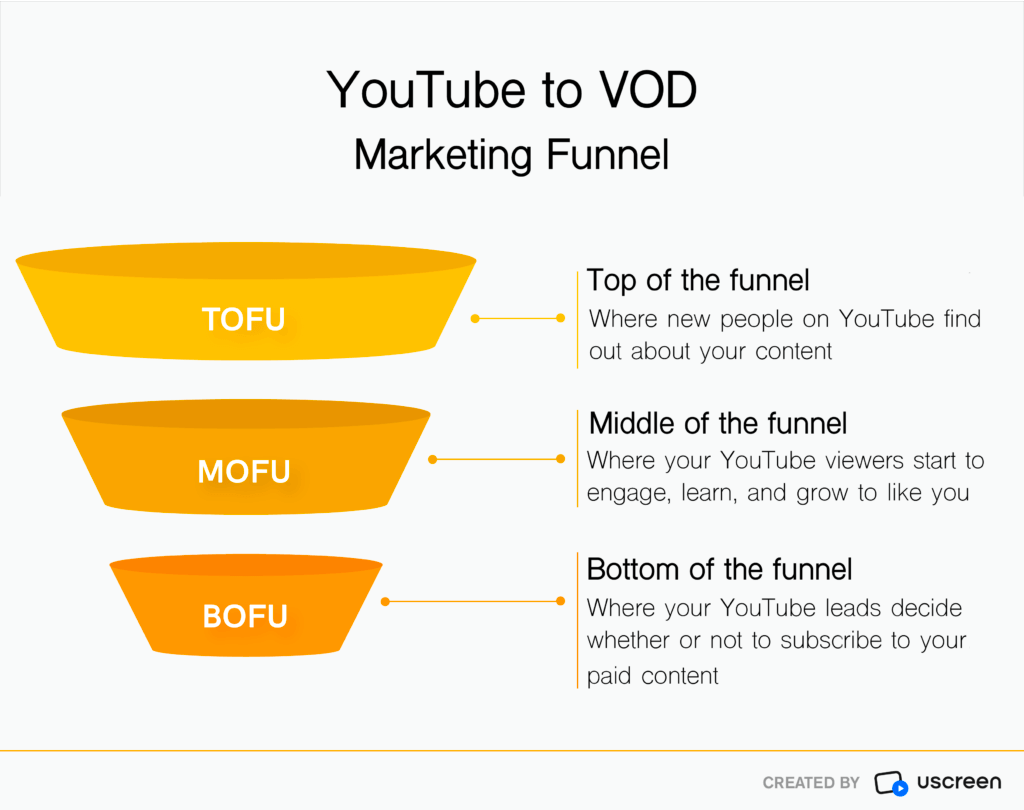
In fact, this is exactly what Frances Long, owner of Your Book Of Memories, did to build her income to over $4000 a month in under 4 months. (More on that at the end of this guide.)
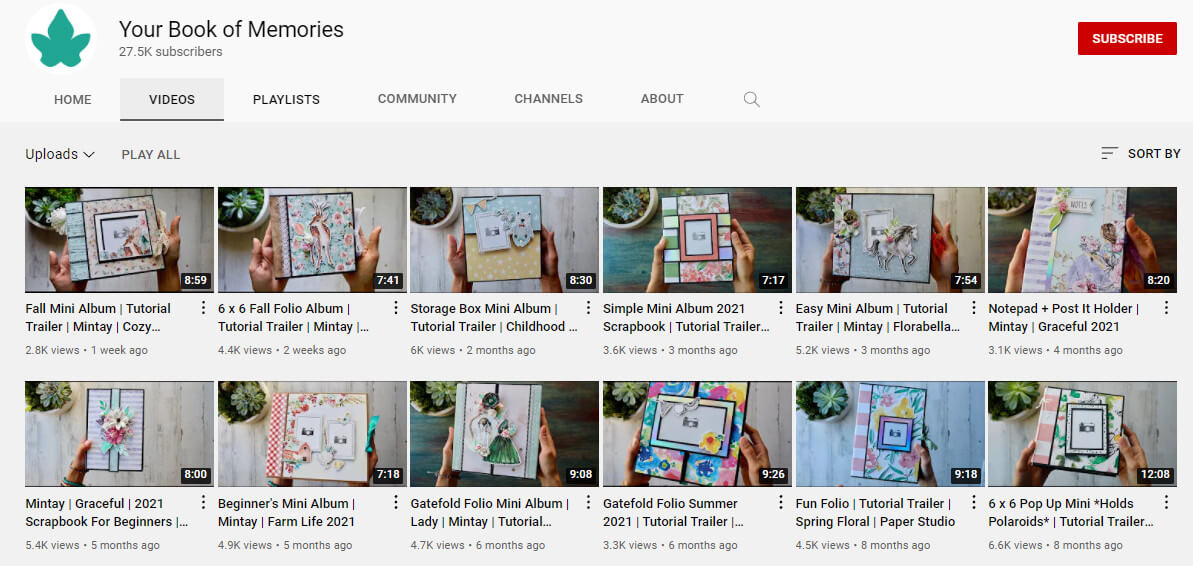
To learn how to create an effective YouTube marketing funnel, check out our guide below, where we’ll walk you through the exact steps you need to take:

![]()
How To Turn Your YouTube Channel Into A VOD Marketing Engine
Read this Article
Invest In Paid Ads
Another way to let people know about your course is through paid advertising. You know, like LinkedIn or Facebook Ads.
You might think these are best suited to ecommerce websites. But, they’re used effectively by elearning businesses all the time:
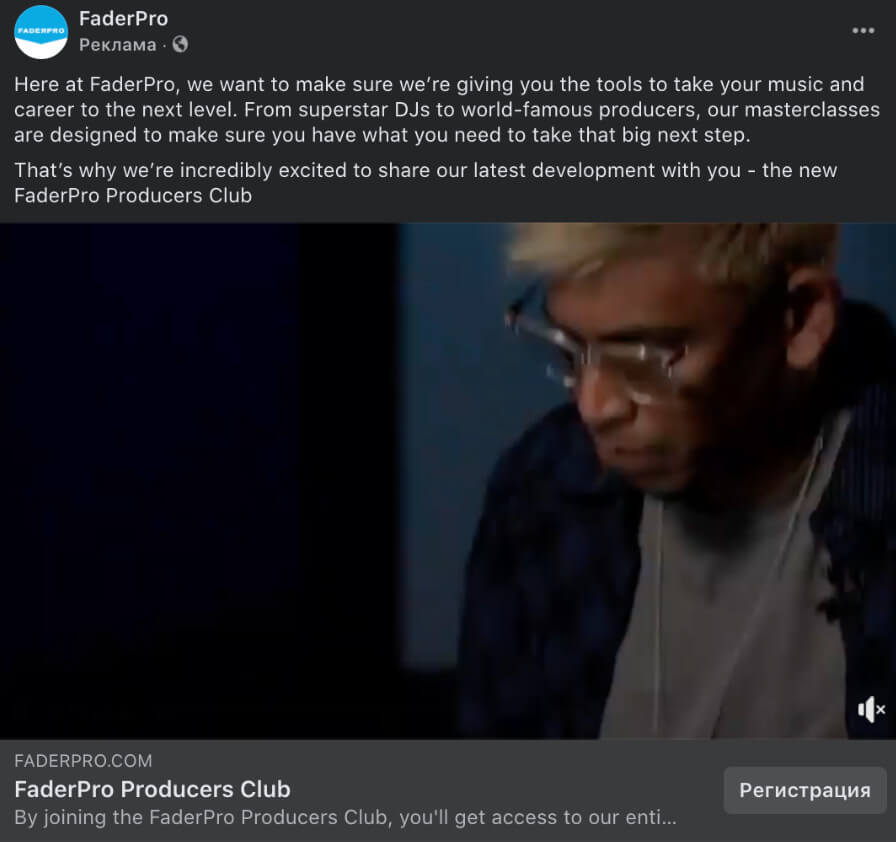
They can give you a great return on investment for the amount of time it takes to learn how to use them, because their targeting is really granular and specific.
Better still, compared to other forms of advertising the costs are affordable, and you can run lots of little tests to see what type of ads will work best for you.
You can learn more about how to do that in the video below:
11: Add Emotional Experiences With Live Streaming
Live streaming has become a key part of running a profitable online course business.
In 2020 – when COVID-19 had us all cooped up at home – we saw watch time for live content across all industries go up by around 250%.
But, when we just look at the online learning industry, our internal research into Uscreen customers found that the minutes live-streamed for online learning increased by 980%.
That means subscribers are now actively seeking out live-streamed content in the post-pandemic world. Why?
Because live streams are emotional experiences.
They build a stronger connection between you and your audience while creating opportunities for them to engage in your community via live chats.
The emotional aspect helps increase engagement and retention. Research shows that live streams can hook viewers between 10 and 20 times longer than pre-recorded videos.
This combination of community, emotion, and engagement is perfect for ensuring the long-term success of your business.
With Uscreen you can host live streams – such as webinars, Q&As, or even gaming streams – from within your platform, and even save the recording to your video library for your audience to watch later.
Better still, with our community features – like live chat – your audience can interact with each other and bring a whole new dimension to your content.
You can learn more about how to get started with live streaming in the video below:
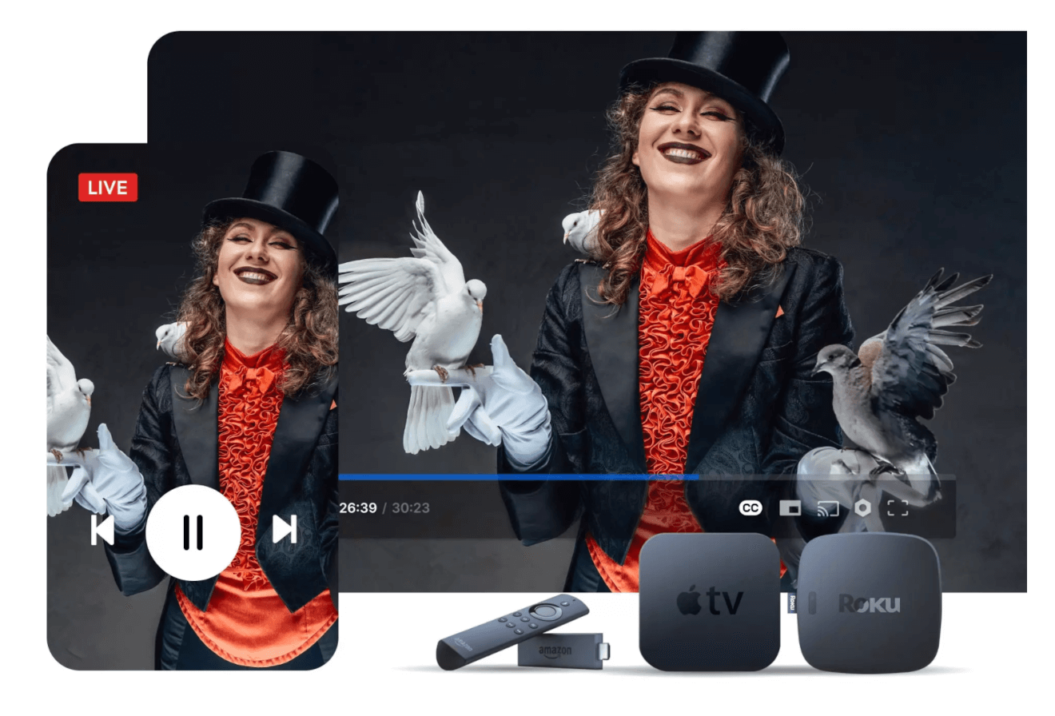
![]()
Interested in a Free 1-on-1 Demo?
Request a Demo
12: Expand Your Offer With Apps
We believe a big part of the future of online courses is apps.
OTT Apps, or Over-The-Top Apps, allow users to view your tutorials natively on devices like smartphones and smart TVs, and they are in high demand!
In fact, eMarketer predicts that by 2022 people will spend more than an hour a day watching videos and tutorials on a subscription OTT service.
They’ve become an essential part of running an online course business because they allow your subscribers to access your content seamlessly on their favorite devices.
They just click the app, log in, and they can access all of their video content in one easy-to-find place. Just like how you’d use Facebook or YouTube on your phone.
Having these OTT apps available can increase your audience and revenue by up to 30%.
Uscreen customers are easily able to add OTT apps to their business – all they have to do is request the apps, and the Uscreen team takes care of the rest.
You can learn more about OTT apps, and why they’re important, in the video below:
How Your Book of Memories Transformed Her Business By Moving To Uscreen
Your Book of Memories (YBM) is a business that teaches people how to build DIY memory albums through high-quality instructional tutorials.
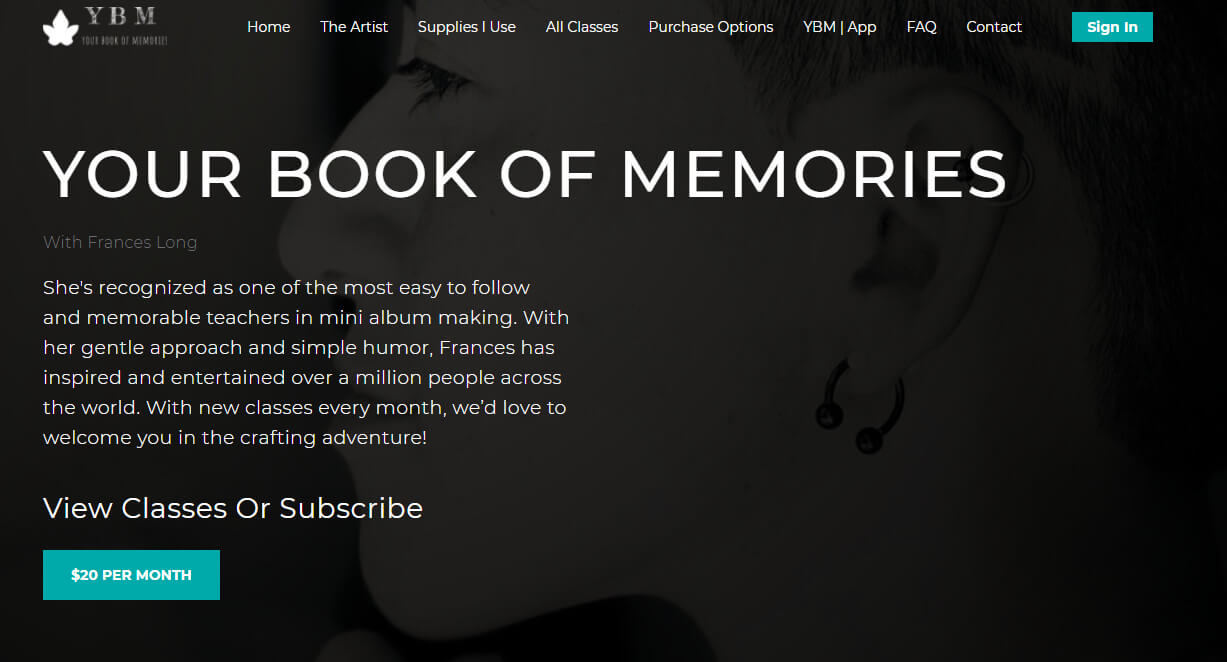
Frances Long, founder of YBM, originally started on YouTube in 2017 and quickly experienced the limited potential of YouTube monetization.
Despite her YouTube channel growing quickly to over 17,000 engaged subscribers, and accumulating over 600,000 views, YBM was generating a meager $380 a month.
Frances realized she had to move her online courses somewhere other than YouTube if she wanted to keep doing what she loves and see a fair return of her investment in time and money.
So in January of 2019, Frances joined Uscreen to transform YBM into a standalone profitable online course platform.
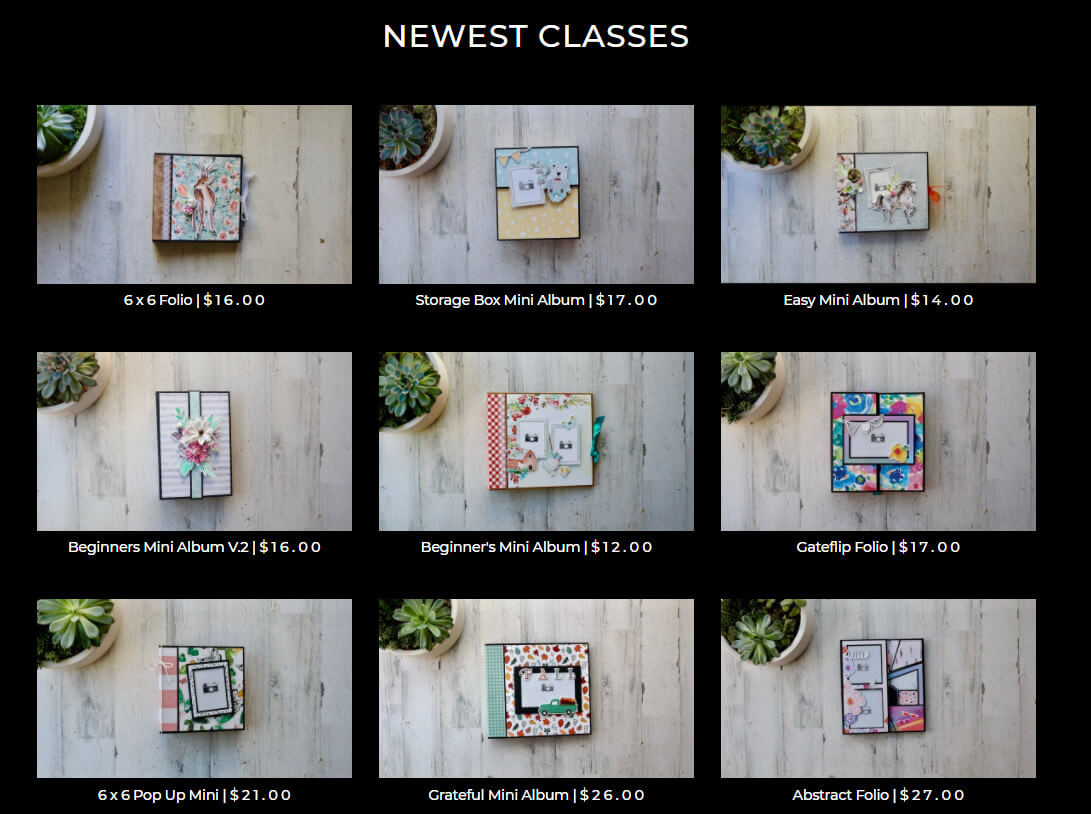
YBM saw an 855% increase in monthly revenue in just 4 months, and was able to do it by using already existing content.
So instead of relying on YouTube as her way of monetizing her courses, Frances now uses her YouTube channel as a lead generator to her paid content on YBM.
Feeling Inspired?
Sell courses online. Reach the people you want to reach. Spread the messages you want to spread. Make the money you want to make.
Don’t just take our word for it: more than 11,000 entrepreneurs, brands, and creators have leveraged Uscreen’s all-in-one platform to build successful video businesses and monetize their content online.
Source: TrustPilot
Get started with Uscreen now, the first two weeks are on us!
Start Free Trial
